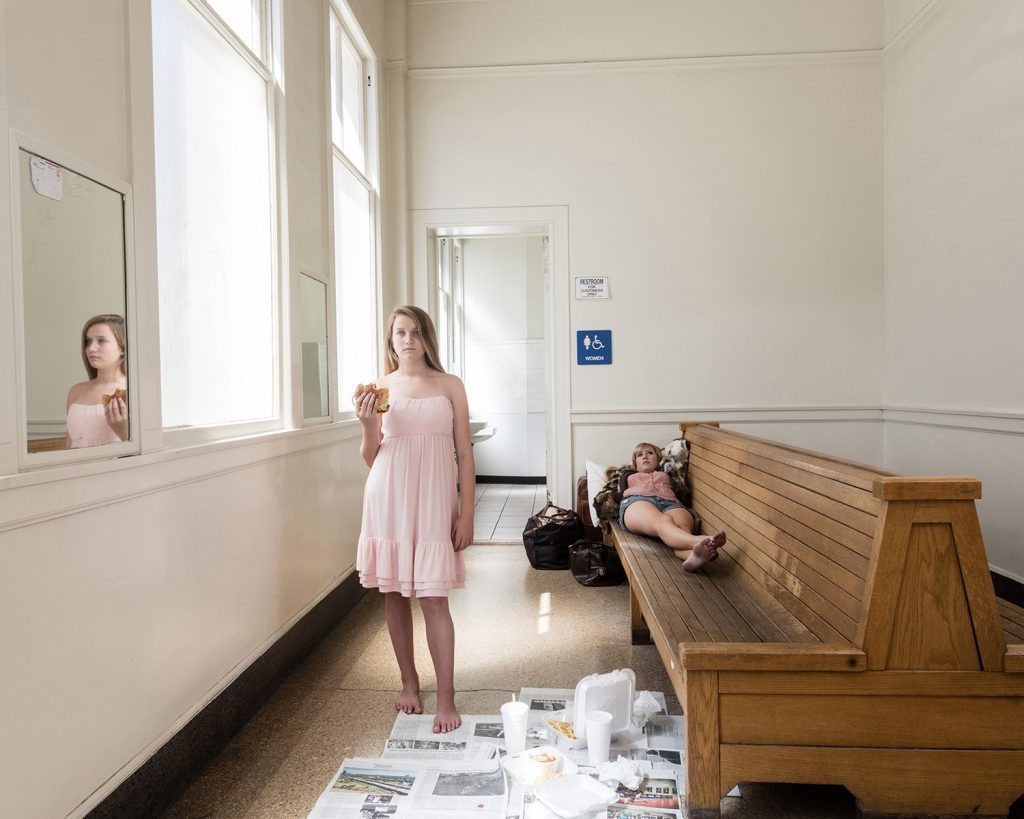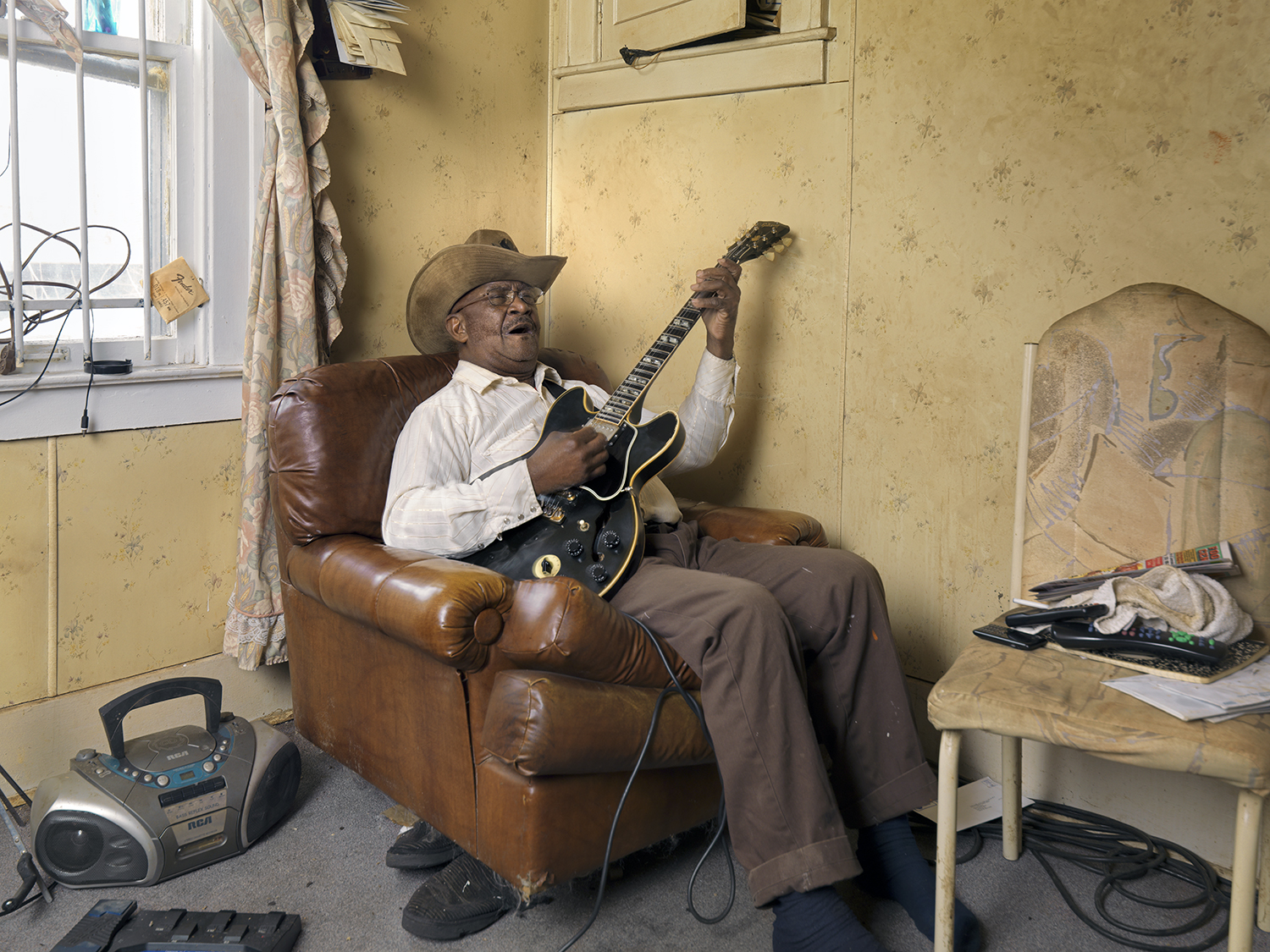
What is the starting point of this series? When did you decide to work on this topic and why?
I spent years as an expatriate. In many ways, I became an adult abroad and that changed me. I thought of myself as a global citizen. Nevertheless, as a photographer, there was always the sense that I was photographing the “other”, that no matter how long I lived somewhere, or how much my heritage or family history intersected with the places in which I was living, I was not ‘of’’ those places. I was and will always be an American. That realization brought issues of national identity and otherness to the forefront. When I returned to the United States I felt that same sense of separation within my own culture. So I began to ask, what is it that makes us ‘of’ place? Besides a passport, what makes me American?

Tell me about the preparation stage and everything that happened before the first day you started taking pictures.
It was more like a return than a beginning. Before I started this project, I had been doing a lot of studio work. I wanted to get back to making the kinds of images I was making as a traveler but this time in the places I knew well, the places where I and my family lived. An outsider’s view of home.
The search is for a kind of memory place. America as an inheritance. As the project went on I began including towns that have more tangential relationships or my family history, and allowed it to broaden into a constellation of American places. Each location is different, if I’m living or have lived in a town I begin with the people and places I know and go from there. If I haven’t lived there I look to relatives and friends and search for artist residencies or communities that I can approach to get started. I tend to spend weeks if not months in each location I read books and watch TV shows or films about and/or set in the area and build my images out of that overall sense of place.


« Contemporary American life is tinged with familiar modern conditions, the consistent movement of people and a corporate stranglehold on commerce so that everywhere is also anywhere or nowhere. »
How do you work? Any constraints?
Every place is different but there are always constraints. Contemporary American life is tinged with familiar modern conditions, the consistent movement of people, and a corporate stranglehold on commerce so that everywhere is also anywhere or nowhere. I’m looking for what remains of place-based distinctions while also trying to capture an essential Americanness. When I arrive in a town I tend to spend days just exploring without any expectation of making images. I look for the people, places, and things that seem distinctly of that town. I meet strangers, listen to stories, watch films, read books, and discover the local lore. I often use personal ties to place as well. Then I attempt to translate what I’ve learned into images.

What type of camera do you use?
Currently, I use a Deardorff 4×5 and a Canon EOS 5DS R. I shoot large format chromes partially because it’s so difficult, it forces me to slow down and stay awhile, to struggle with the composition, the subject, and the light. I use the Canon for scouting and more whimsical images and I enjoy the relationship between them and how they both draw out something different from the subject.


Before talking about your project and your characters can you tell me more about your feelings about photography and the creative process?
Making images is essentially a collaborative process and it demands an extraordinary level of receptive attention. It is simultaneously exhausting and invigorating. Even the idea of a camera gives me new eyes. When I’m shooting I am filled with curiosity and wonder. I allow what I see to capture my imagination. It can be something quite ordinary: a room, a street, a person, or a landscape but I’m seeing something exquisite. The difficulty is in capturing that wonder on film and in conveying it to others.

Let’s talk about your project. You’ve traveled to different cities in the United States like chapters of a book, a story.
Do those cities have a special/personal bond with you?
Many of the places I photograph are places that either I or my family have at some point called home but I’m also interested in places that are more loosely tied to both my ancestral history and what I refer to as my cultural inheritance. The goal of this project is to examine America as both home and mythology, in other words, I am looking for what makes each place home for every American. I am looking for the myths of place that belong to all of us. I’ve been photographing for this project for about eight years and it’s not finished. I imagine I’ll continue working on it for several more.

Tell me more about the portraits, who are the people? How do you manage your approach?
Part of this work is about meeting strangers in strange places and looking for how they embody aspects of America. The images are not about the individuals themselves but rather how they have come to represent the place and how the place is reflected through them. Some people are easier to meet and talk to than others but in the end, it’s always a rewarding experience. Sometimes the encounters result directly in images and often they do not. When I’m shooting for a series I find it important just to listen to people’s stories. It is a way of connecting or reconnecting to the place and gathering information for images I may make later.


« Because being a traveler is about specificity and expansion, about discovering the complex and often tragic beauty that exists in each place, it is about all that makes us different and all that makes us the same. »
If you have to choose one photo or two which one it will be and why
I have a hard time with favorites. When I was a traveler people would often ask “What is your favorite country” and I often responded by telling them about something I found fascinating in this country or that. Because being a traveler is about specificity and expansion, about discovering the complex and often tragic beauty that exists in each place, it is about all that makes us different and all that makes us the same. I see the making of images as an extension of that process. Individual images are the product of subtraction, framing, and singling out. What I find most interesting is how images are viewed together and in sequence, as an accumulation of specifics that carry meanings that shift according to both how they are viewed and by whom.

Do you have any plans coming? Working on a new project?
Currently, I’m working on a series of images made in and around the town of Buffalo, Wyoming. It’s a small ‘old west’ town at the foot of the Big Horn Mountains. I began the series while I was in residence at the Ucross Foundation for the Arts and I continued it while in residence at The Occidental Hotel. I hope to return to the area next year.


Your top 5 photobooks?
Larry Sultan’s Pictures from Home
Phillip Toledano’s Days with My Father or When I Was Six
Sally Mann’s Memoir Hold Still
Michael Lesy’s Wisconsin Death
Joan Fontcuberta’s Fauna (are books I return to a lot when thinking about archival facts and fictions)
Christian Patterson’s Redheaded Peckerwood has a wonderful noir storytelling quality to it that also happens to be a poetic look at a classically American myth.
Interview Kalel Koven
Photographer’s Links: Website / Facebook / Instagram






